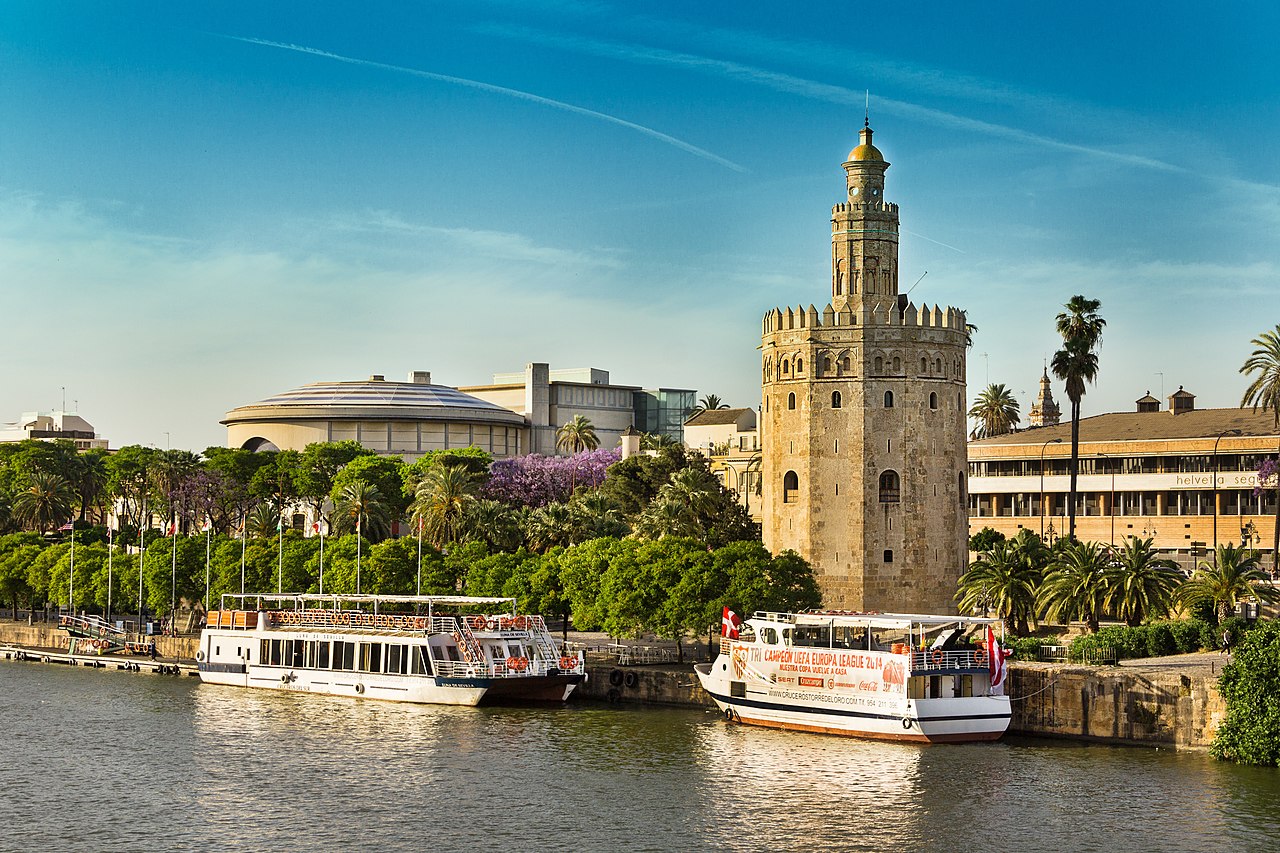
Have you asked yourself why is it called Torre del Oro the famous monument of Sevilla? It is evident that this mineral does not exist in its decoration, it does not even have golden elements that imitate it. And yet, it already received this name in its Muslim times: Bury Al Dahab.
Because the Torre del Oro has accompanied the history of the Andalusian city for more than eight hundred and fifty years. The first written reference we have of her is found in the First General Chronicle (1270-74) of Alfonso X the Wise, where it already appears with that name. For all these reasons, we are going to explain everything you need to know about this architectural wonder, including why is it called Torre del Oro.
Brief history of the Tower of Gold
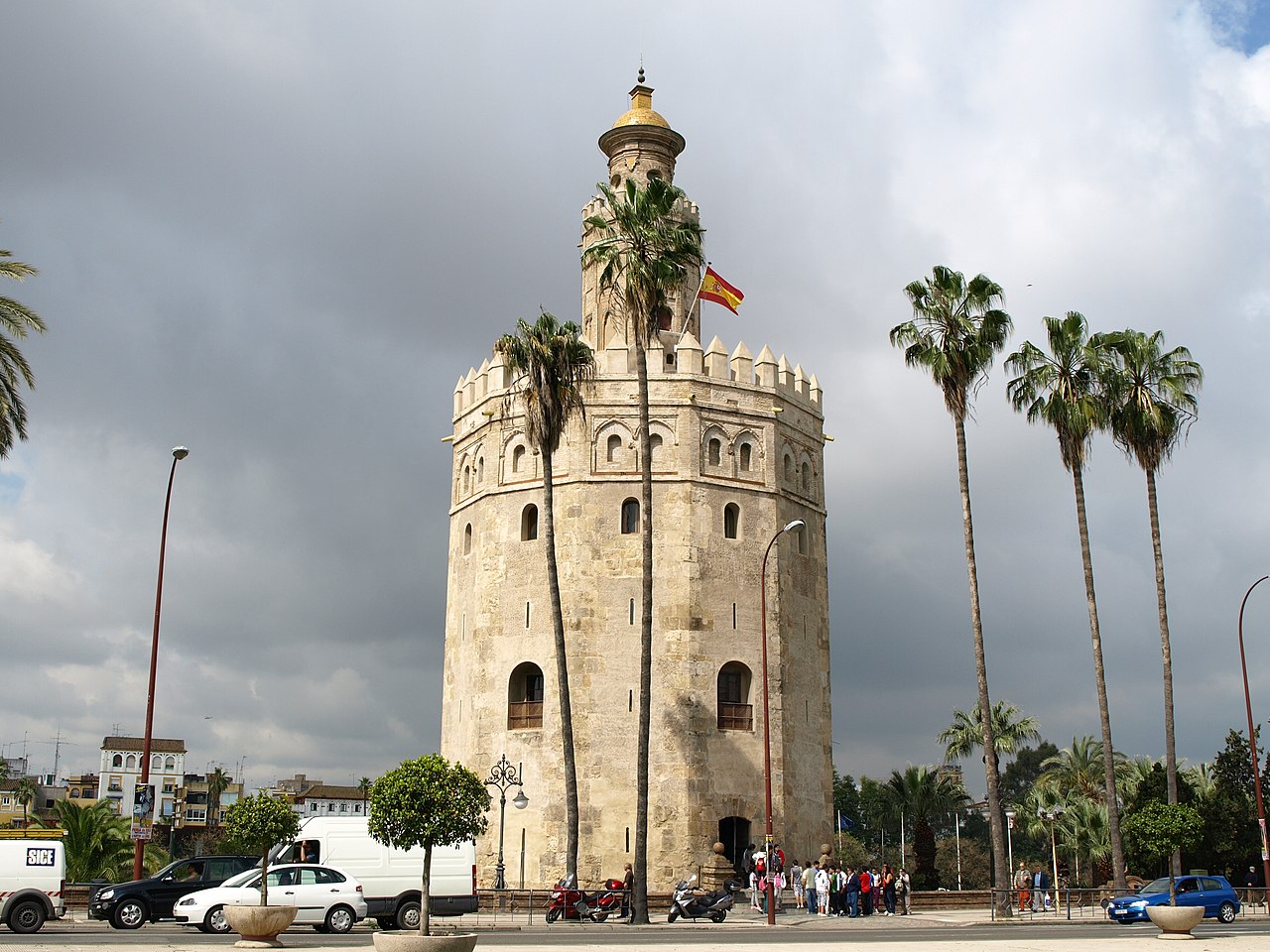
The Tower of Gold in Seville
The most famous tower in the city of Seville next to the Giralda It was built between the years 1220 and 1221 of our era. Its function was defensive, within the set of the old walls. Specifically, it closed the passage to the sandbank and protected the town's port. Likewise, it was linked by wall sections to the Silver and Abd el Aziz towers, as well as Alcazar.
However, later the Torre del Oro has performed the most diverse functions. According to the medieval writer But Lopez de Ayala, was a gold store, as we will see later, but also a prison for noble figures and even, today, a museum, as we will also comment on. Likewise, it has undergone several restorations.
Perhaps the most important was the consolidation work after the lisbon earthquake of 1755. Precisely, he took advantage of this moment to add the cylindrical body of the upper part. It was the work of the Belgian Sebastian van der Borcht, to whom we also owe the construction of the Royal Tobacco Factory of Seville.
Already in the 1942th century, the Torre del Oro received two more restorations. The first in 1990 to adapt it to the museum and the second in XNUMX for the Universal Exhibition of 1992 It held in Sevilla. Just in this last year, he was twinned with another wonderful construction: the Tower of Bethlehem in Lisbon.
Important facts about the Torre del Oro
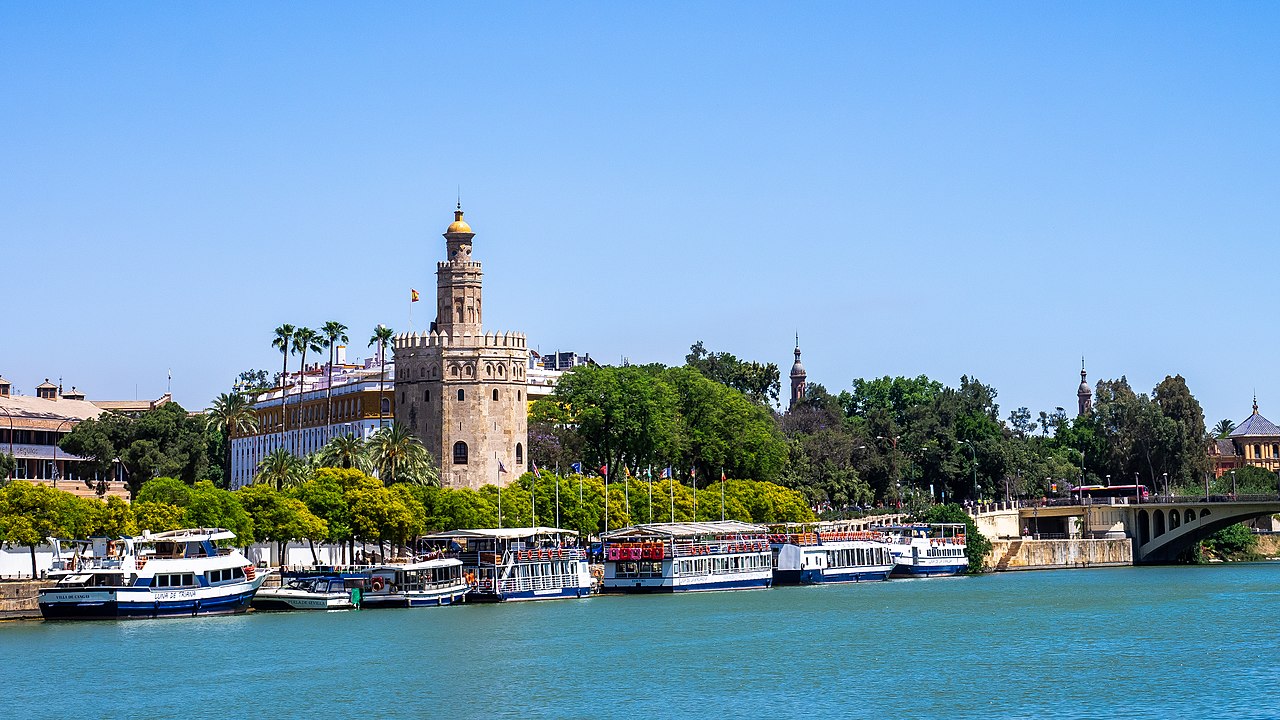
The Torre del Oro on the banks of the Guadalquivir
It is a albarrana tower located on the left bank of the Guadalquivir river. In Al-Andalus, received this name a type of tower that was exempt from the walls, although joined to these by a bridge which, if it fell into the hands of the enemy, could be easily destroyed. Because its function was defensive as well as ornamental, to harass attackers from a forward position.
They were very common in Muslim Spain. As examples of them, we will cite the one with Scaredogs en Badajoz, those surrounding the Citadel of Merida, Those of the castle of Piedrabuena or those of Talavera de la Reina.
The location of the tower is central, in the Arenal area, where are also the shipyards and the bullring. Likewise, it is in front of the popular neighborhood of Triana, which is on the other side of the river. And already in 1931 it was declared Historic Artistic Monument.
As we told you, it was built in 1221 and, originally, it had a single body, although it currently has three. The most important and oldest is a twelve-sided polygon with a width of 12,50 meters. For its part, the second body was built by order of Peter the Cruel in the fourteenth century, while the third is the one we mentioned from the eighteenth.
Currently, the Tower of Gold It is 36 meters high and has three floors.. These communicate through a polygonal staircase. On the other hand, in recent decades, the work of the Armada, since it houses, as we had already told you, a naval museum.
The Naval Museum of Seville
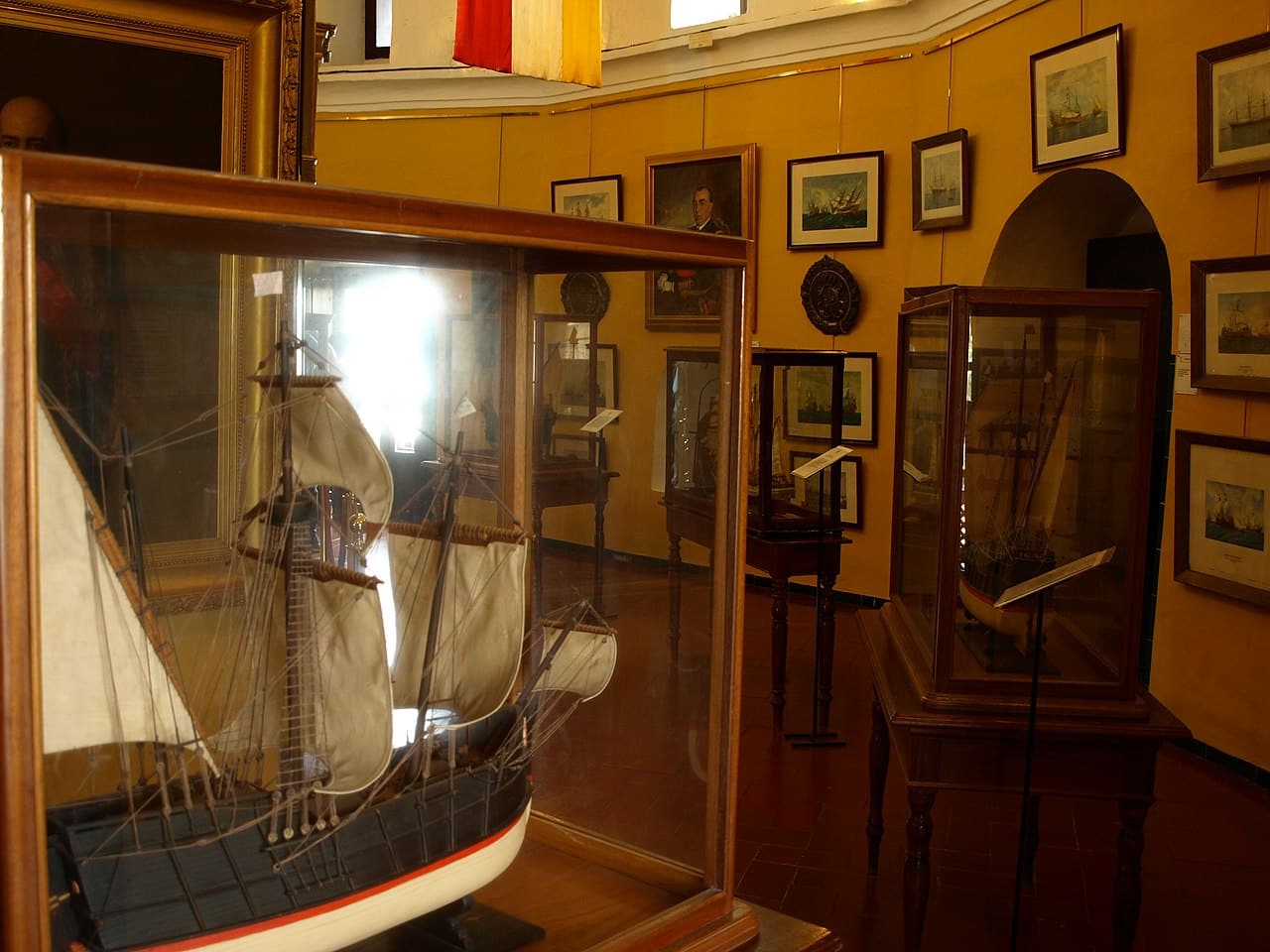
The Naval Museum of Seville, in the Torre del Oro
It was inaugurated on July 24, 1944 and has two floors, the first 85 square meters and the second 127. It houses the most varied objects related to the world of nautical. For example, fossilized marine remains, navigation devices, paintings and engravings with a maritime theme, historical documents and even a figurehead.
But, among its most outstanding pieces, we will mention a XNUMXth century cannon, tiles of the La Cartuja Factory and XNUMXth century nautical maps. Regarding these, it stands out a reproduction of the first scientific world map work of Diego Rivera in the sixteenth. But you can also see navigation flags, ship models and even anchors in the museum.
In the installation, the importance for Seville of the Guadalquivir as a navigable river. And, likewise, the enormous value of the Seville city for the trade with the indies. In short, it is a small museum that we advise you to visit because it is very interesting and instructive.
Why is it called the Tower of Gold?
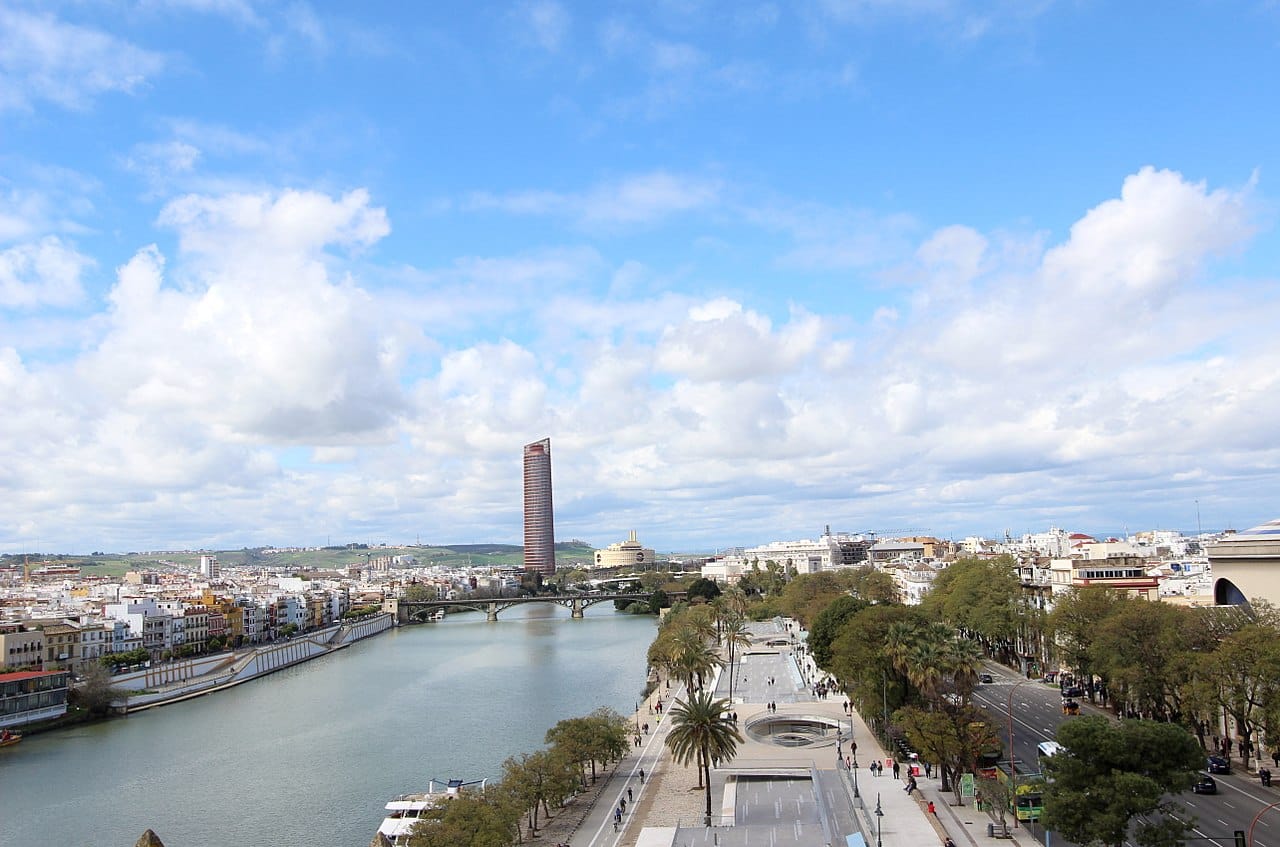
The spectacular views offered by the Torre del Oro
Once we have explained all of the above, it is time to focus on the Different theories about the name of the famous Seville tower. But we already anticipate that the debate about the true one is very old. In fact, the discussions began as early as the XNUMXth century and scholars have still not agreed.
The first theory of which there is evidence attributes the name to the fact that in it gold from America was kept. However, this is a mistake. The riches that arrived from the New World, being the property of the Crown, were first stored in the Hiring House (current Archivo de Indias) and then in that of the coin. However, according to Professor Theodore Falcon, were unloaded next to the Torre del Oro and that's where the confusion could come from.
Another very widespread and even older thesis we owe to the chronicler Louis of Peraza. According to this, the second body of the construction had metallic tiles that shone when the sun hit them. The historian also refers to them Diego Ortiz de Zuniga, who also points out that they would have been undone over time.
However, neither one nor the other speaks of these reflections being like gold. This was interpreted by scholars Leopoldo Torres y Jose Gestoso at the beginning of the XNUMXth century and were in charge of disseminating in the popular imagination the golden glitter theory. In addition, there is no document or archaeological testimony that speaks of these tiles in the famous tower, so the theory is baseless.
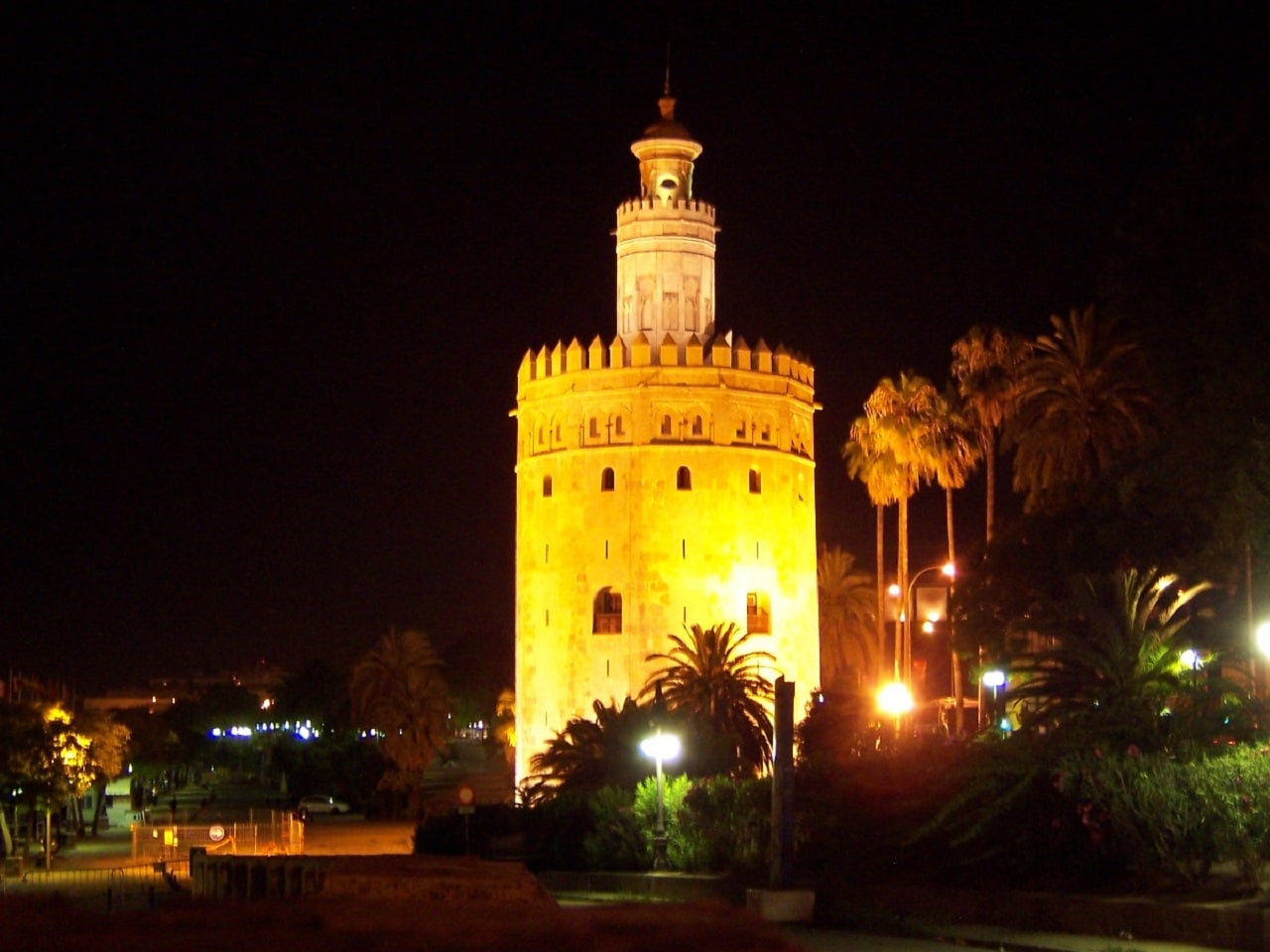
Spectacular image of the Torre del Oro illuminated
Related to this thesis is the one that attributes the name to the construction of the third body of the tower. This ends in a small gold lining dome that could sparkle in the sun. But this opinion cannot be correct. As we have already told you, the name of Torre del Oro already appears in documents from the time of Alfonso X the Wise, while the construction of this third body was made in the eighteenth century.
On the other hand, what is considered to be more realistic thesis about the name of the Torre del Oro. She says that she was baptized like this because of the material with which it was built. This was a mixture of lime mortar and pressed straw that, in contact with the sun, gave the tower a spectacular shine that made it look like gold. It can still be seen today, but centuries ago it was much more evident. Currently, the tower shows the rammed earth and the stone. However, it was built in a Muslim port that was already beginning to stand out in the Arab world. Therefore, it had to present a magnificent aspect. In addition, it was necessary for it to have a strong plaster that would resist damage from moisture.
For these reasons, the tower was covered with a yellow stucco that fulfilled both functions. Due to the action of the sun on it, the golden shimmer that encouraged to baptize it as Torre del Oro. This is the most accepted theory by scholars of the monument and also seems the most realistic.
In any case, we advise you that, if you travel to Seville, do not forget to visit it. You will not only be able to appreciate it from the outside and see the reflections of it, but also enter the Naval Museum to admire it. and you can even go up to your lookout that gives you spectacular views of the city, especially of the neighborhood of Triana and the channel of Guadalquivir.
Seville, much more than the Torre del Oro
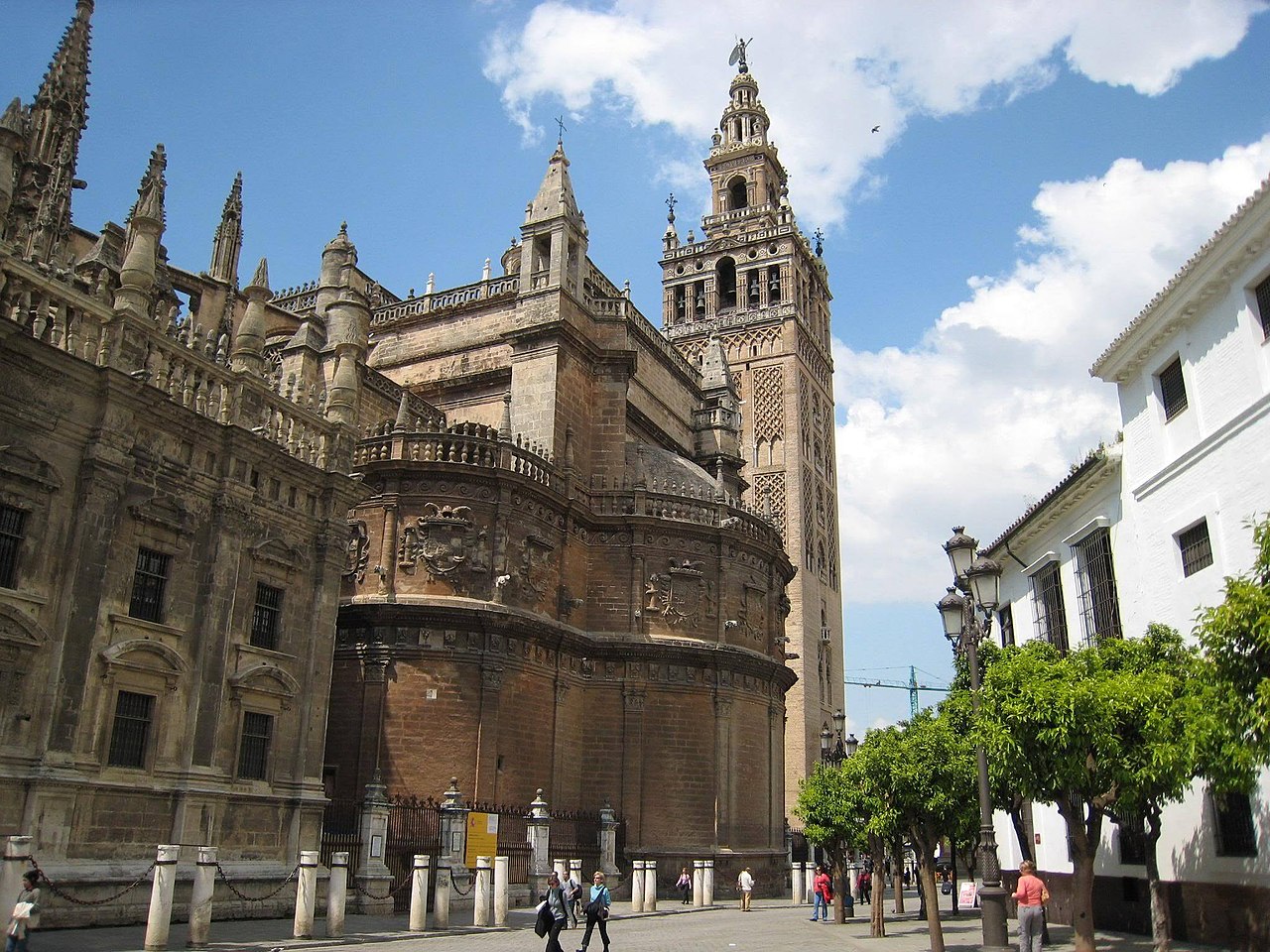
Seville Cathedral with the famous Giralda
But your trip to Sevilla It would be incomplete if you just limited yourself to seeing this tower. The great Andalusian city has much more to offer you. Therefore, our article cannot focus only on why it is called Torre del Oro. We must also make other recommendations, although this is not the place to go through them carefully.
Thus, an essential visit is the wonderful Seville Gothic Cathedral. With its imposing dimensions (it is the third largest religious construction in the world), it houses jewels such as the Royal chapel or Main Altarpiece. But the great emblem of him is the Giralda, minaret of the old mosque from the XNUMXth century.
Very close you have the Real Alcazar, a palace intended for monarchs in which, precisely, the Hall of the Kings, Hall of Carlos V and Courtyard of the Maidens. Equally monumental is the Archivo de Indias, an XNUMXth-century construction of unquestionable classical workmanship that houses documents of incalculable value. Finally, we want to recommend that you visit the impressive Plaza of Spain, built for the Ibero-American Exhibition of 1929. It is a colossal building regionalist style that pays homage to all the lands of our country.
In conclusion, we have explained why is it called Torre del Oro the famous construction of Seville. But we have also shown you important data about it. And we wanted to mention at least a few of the many monuments that the Andalusian city offers you. Go ahead and visit it and enjoy all of them.